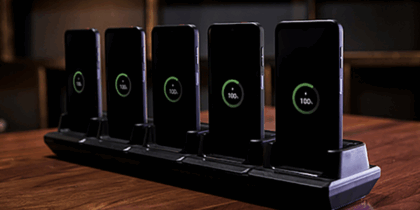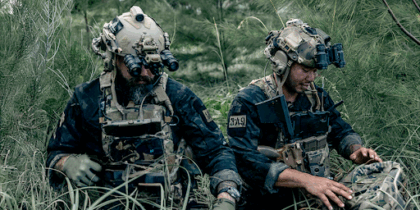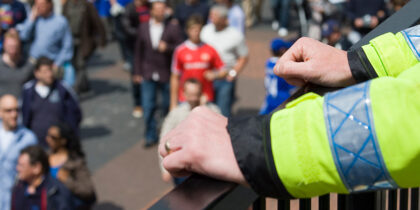From the time a call first comes in regarding a missing toddler to the moment the child is located and returned to the parent, today’s public safety technology is key to effective use of resources. Let’s break down the lost child example to make the point.
The mom and toddler are in a large park and there is no readily available address. Upon realizing the child is missing, the mother calls 911 using her cellphone. The agency’s enhanced 911 and computer-aided dispatch (CAD) system pre-populate the call screen, providing caller location and call back number. As the call-taker obtains essential details, the evolving incident information shows on the dispatch screen along with recommended units based on location and availability. The call-taker instructs the frightened mother to use her phone to forward a photo of the child and subsequently posts this item to the CAD incident record.
Because the officers have smartphones that are CAD-addressable, all details of the call, including the photo of the missing child, are available regardless of the officers’ proximity to a vehicle or the nature of their assignment. This is relevant, since bike patrol officers can be anywhere within the park. Without a smartphone, they would only have access to the information transmitted by radio.
Continuing our scenario, darkness is setting in and it’s getting cold, significantly increasing the risk to the child. The supervisor coordinating the search effort is able to view the officers’ specific locations because their smartphones continually update their position. This makes for a much more effective deployment and ensures full coverage of the targeted area.
Mobile Security Is Crucial in Law Enforcement
Find out why Samsung devices are some of the most secure available in this white paper. Download Now
As the search gets underway, two of the officers turn their smartphones into thermal-imaging tools by plugging a FLIR (forward looking infrared) device into the phone’s USB port. Within minutes, one of the officers spots the telltale heat signature of a small child huddled beneath some overgrown shrubs. The child is physically okay, but becomes hysterical when contacted by the officer. Mom is at a makeshift command post, but the quick-thinking officer calls the post and establishes a video chat that permits the frightened child to see and hear their mother. Minutes later, mom’s hug takes the place of the video image.
Making Policework Smarter
To some, this may sound like the script from a futuristic movie. To others, it reflects their agency’s current or emerging capabilities. Although technology has been a large part of police work for at least three decades, today’s smartphones are creating possibilities that, only a few years ago, would have been considered science fiction. At Samsung, we’re proud to partner with public safety and provide devices that increase effectiveness and capability for those who serve. Across the country, many thousands of public safety officials are already using our phones, but the true potential is only beginning to be realized.
Today, many officers can access powerful data resources from their patrol vehicle using in-car computers. Unfortunately, these capabilities usually end when a first responder leaves their mobile office. For those not assigned a traditional patrol vehicle, such as the bike officers in the above scenario, information is usually limited to that available by radio.
While many agencies issue smartphones to some personnel, our experience has shown that department-provided phones are often assigned to administrators and investigators for the traditional tasks of phone, text and email. The power and widespread use of smartphones provide a unique opportunity to extend data-query and other tools well beyond the patrol car. This results in officers having greater access to valuable information and increased situational awareness, regardless of assignment.
At Samsung, we respect the challenges faced by those wearing a badge. We know that many agencies have already invested heavily in public safety technology and practitioners want devices that can, where possible, be an enhancement and extension of existing systems, rather than requiring an expensive and complex replacement.
We design our devices to be both practical and powerful, while recognizing that public safety faces some unique security issues. That’s why we have put so much effort into our Knox security platform that provides defense-grade protection for sensitive data. Knox also integrates well with powerful mobile device management tools capable of supporting an ever-changing 24/7 operation. We’ve helped many agencies identify the right solution so that device rollouts, replacements and upgrades don’t overwhelm department staff.
What’s on the Horizon?
Wearable devices will provide smartphone-like capability and allow officers to view information at a glance while maintaining the ability to use their hands for critical tasks. It’s also likely that today’s in-car computer will become a combination of a smartphone linked to a dedicated display and keyboard in the vehicle.
Our new DeX docking station already makes it possible for your smartphone to serve as a personal computer with a dedicated keyboard and large display. It’s likely that a variation of DeX could find its way into a patrol car environment, allowing an officer to have full data capability with a single device in and out of the car. Not only would this dramatically extend an officer’s capabilities, it would also be cost-effective.
We’re actively and collaboratively working with first responders to develop systems that push real-time information to those who need it most, and are committed to delivering public safety solutions that make a difference and help shape the next generation of law enforcement.
Learn why Samsung smartphones are some of the most secure devices for law enforcement officials.









